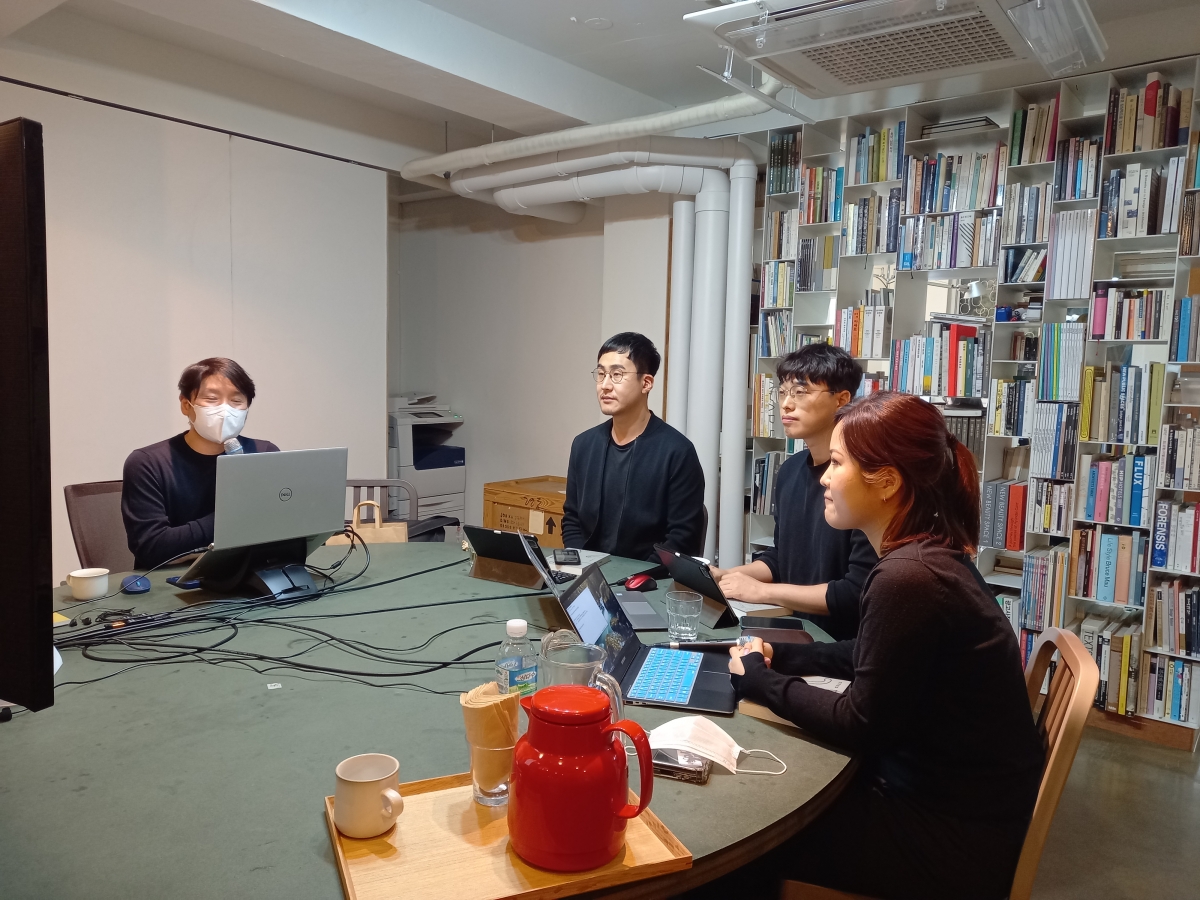
On 10 February the One Man One Book programme entitled Gagamyomyo-cat in my house (hereinafter Gagamyomyo), co-hosted by SPACE Books and the Junglim Foundation, was held online. The Junglim Foundation is presently promoting a book talk programme called One Man One Book, which selects excellent books from the field of architecture and invites authors or translators to share their stories.
Gagamyomyo presents a house through the lived experience of the cat that calls it home. It includes interviews with those from the three households who live in a studio, one-bedroom, and a small apartment, as well as the four households that commissioned B.U.S Architects (hereinafter B.U.S) to design their homes. B.U.S, the book’s author, never had any experience with cats until moving to Seochon. Then, one day, they began to develop a ‘relationship with a cat’ named Jjagu, who was not scared of humans and who frequently wandered around the office, crossing the gate to sit on the teonmaru (traditional wooden porch) inside. In a similar chance encounter with Jjagu, perhaps it became natural that B.U.S came to meet a client who is a butler. Indeed, the number of households living with companion animals is on the rise. In the book, there is an imagined line from the cat: ‘Please reflect on our opinions who live together-eow’. B.U.S said that it was designed as a response to this, but it was often used in unexpected ways. For instance, in a cat-tagonal house, they thought the cat could play in the yard, but the cat, as a territorial animal, did not escape from the designated space. On the other hand, there were a few places that had unintentionally became spaces for the cat. It is said that the cat of Okin row house enjoys looking out the window while sitting at a large desk, which the butler prepares for a cooking class. And the cat of Dogang-ri Brisa loves to rest on the tile on the bathroom windowsill to relish its coolness. As such, it is not easy for butlers and architects to predict precisely what will become the cat’s favoured space. However, as if it is one of the butler’s virtues to try to understand the cat as much as possible, in that butlers propose a design that best reflects the routine of the cat with whom they live. For the sake of the cat, who is naturally deaf, they asked for a design in which the kitchen, which generally houses a lot of fragile items, would have plenty of storage space to keep everything. For a cat that nearly fell down the stairs, they requested the installation of a handrail. When the cats from the aforementioned cat-tagonal house walked out to the yard on a snowy day, they left leaves-like footprints by stepping on snow for the first time in their lives. If we strive to understand cats better, we might find ourselves obliged to accommodate them in more sensitive ways.




